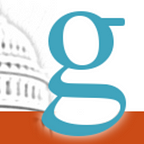How much should America tax businesses? Congress could change the rate soon.
The U.S. has the third-highest federal corporate tax rate in the world at 35 percent, behind only the United Arab Emirates and Puerto Rico. The U.S. rate hasn’t budged since 1993, even as most nations have lowered their own rates.
Decreasing the American rate has been one of the few bipartisan goals in Washington, but even many erstwhile supporters believe President Trump’s dramatic plan announced this week would balloon the deficit too much. Is a Paul Ryan-backed alternative in the cards instead?
The status quo
Politicians from both parties lob two main critiques of the current corporate tax system.
The first is that the high rate hurts the U.S. competitively in the global marketplace, as companies are likely to incorporate elsewhere to avoid America’s ostensibly high corporate taxes. This criticism dovetails with increasing skepticism in recent years from both sides about free trade agreements, the idea being that the U.S. hurts itself while other nations surge ahead. (The U.S. does maintain by far the world’s largest gross domestic product, although its share of the world economy has been sliding.)
The second is that current tax code is riddled with so many deductions, loopholes, and exemptions that the effective corporate income tax rate is significantly lower than 35 percent, so the government is collecting nowhere near the amount they’re ostensibly owed. According to a Treasury Department estimate, it might be as low as 20 percent. In fact, more than two-thirds of incorporated businesses pay zero corporate income tax. Most famously, a Senate inquiry found that Apple paid zero corporate income tax in any country where it does business — U.S. or otherwise — for at least four consecutive years, despite tens of billions of dollars earned.
Competing Republican plans
This past week, President Donald Trump proposed slashing the rate dramatically to 15 percent, while eliminating many loopholes and deductions. That plan could cost the government an estimated $3.7 trillion over the next decade, according to the Committee For a Responsible Federal Budget. 20 nations have a rate equal to or less than the 15 percent Trump proposes, meaning most nations have a higher rate.
Speaker Paul Ryan (R-WI1) wanted to lower the rate to 20 percent, spending months trying to gin up support for the plan both in Congress and among the broader public. Ryan was reportedly blindsided that the White House announced the 15 percent plan without consulting him first.
Politico noted that Ryan specifically selected his number under the math that 20 percent was the lowest to which the rate could be lowered where the revenue loss might still be made up, thus not adding to the deficit. The White House hasn’t even touted deficit reductions as a byproduct of their plan at all, which many are taking as a tacit admission on their part that it would increase the deficit, as the vast majority of economic analyses of the plan have concluded.
Many conservatives claim that the ostensible revenue loss from a tax cut — provided it doesn’t go below a certain point — will be cancelled by a combination of eliminating existing loopholes and increased economic output from businesses, a feature they call “revenue neutral.” Many economists dispute this view, calling it wishful thinking.
Some conservatives believe plans to lower to 15 or 20 percent don’t go far enough either, with some even advocating for an abolition of it altogether — a 0 percent corporate income tax. The idea of shifting from corporate to other forms of individual taxes such as capital gains and estate taxes could conceivably work, although the GOP also wants to lower or eliminate those individual taxes too. 14 countries have no corporate tax rate.
Democratic plans
Barack Obama proposed lowering the rate to 28 percent while he was president, with a special rate of 25 percent for manufacturers. However, for several reasons the plan never passed, among them a sufficient number in the GOP believing the plan didn’t go far enough, similar to why the Affordable Care Act replacement plan sank earlier this year.
The Congressional Budget Office found that raising the corporate tax rate by 1 percent would raise $100.3 billion over the next decade. While some Democrats have endorsed such a proposal, no congressional Republicans appear to have.
Last year, Democratic nominee Hillary Clinton proposed maintaining the existing 35 percent rate while closing many loopholes and ending many deductions. Sen. Bernie Sanders (I-VT) challenging from the left called for a qualitative “increase” in the corporate tax rate, but did not appear to quantify exactly what that number should be.
Who would benefit?
The two parties differ in their claims of who would primarily benefit from a rate reduction.
“It would not represent a tax-free windfall to a bunch of pinstriped boardroom schmucks and Wall Street types and corporate shareholders,” Kevin D. Williamson wrote for the right-wing National Review. “The money still gets taxed, but not until it hits someone’s bank account. You have not eliminated the taxation of that corporate income. You have moved it from the corporate level to the individual level, which has some benefits: Most individuals have far less opportunity and incentive to go to great lengths in pursuit of tax-avoidance strategies.”
To the contrary, a New York Times analysis found that Trump’s and Ryan’s plans would see tax benefits accrue primarily to the wealthy, because in addition to changes in corporate taxation, they would also eliminate taxes on wealthy individuals such as the capital gains tax. Trump has not released his tax returns, the first major-party nominee not to do so since the 1970s, and has not separated himself fully from his business holdings while in the White House. A major concern among Democrats is that Trump’s plan deliberately — and perhaps Ryan’s plan incidentally — would contain tax break provisions to benefit Trump himself and his family.
This article was written by GovTrack Insider staff writer Jesse Rifkin.
